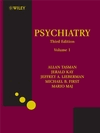Diagnostic Classification in Infancy and Early Childhood
Summary
The Diagnostic Manual for Infants and Young Children (DMIC) put out by the Interdisciplinary Council on Development and Learning Disorders (ICDL) is an innovative multidimensional classification system that uniquely considers all dimensions of development, including emotional, social, language, cognitive, regulatory–sensory processing, visual–spatial, and motor capacities. Examining emerging development capacities and the relationships between them provides diagnostic formulations for interactive disorders, regultory–sensory processing disorders, neurodevelopmental disorders, as well as language and learning disorders and suggests developmental pathways to symptom formation. No classification system currently exists that integrates all the interactive aspects of developmental capacities, individual differences, and the impact of relationships. The ICDL-DMIC formulates a clinically useful approach that facilitates research into etiological factors and informs effective intervention approaches that are tailored to the unique developmental profiles of each child and family.



